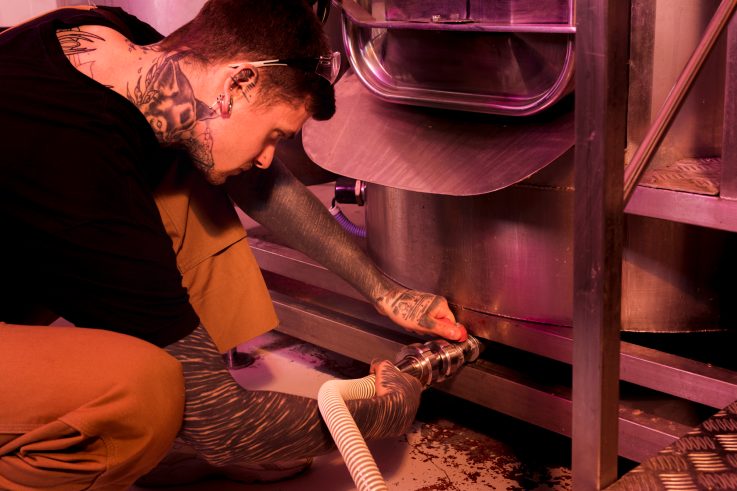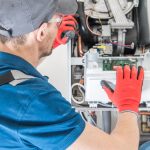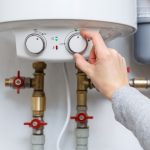
The Cost of Inefficiency: When to Replace Your Old Furnace
Winters shouldn’t feel like a gamble with your comfort, safety, or budget. Yet many homeowners ride out one more season with a creaking, fuel-hungry heater and hope for the best. If your utility bills keep climbing, rooms feel uneven, or you’re scheduling multiple service calls each winter, it may be time to talk about furnace replacement. This guide—written on behalf of Super Green HVAC—explains how to recognize the tipping point, compare your options with confidence, and plan a project that pays you back in quieter, steadier comfort.
You’ll learn how to calculate the real cost of running an aging system, which warning signs matter most, and how modern equipment raises the bar on efficiency and reliability. We’ll also cover rebates and educational resources from Canadian agencies, detail a straightforward installation process, and close with FAQs so you finish with clarity about furnace replacement.
Why Inefficiency Gets Expensive—Fast
Even a reliable furnace loses ground over time. Heat exchangers, blower motors, and control boards age; ducts leak; and a decade of dust and vibration take their toll. Efficiency drops a little each year, and that decline becomes expensive during long cold snaps.
What “inefficiency” really looks like
- Your thermostat reaches setpoint but the system runs longer than it used to.
- Bills rise year over year despite similar weather and habits.
- The unit cycles on and off frequently or seems louder than in past seasons.
When you add the risk of inconvenient breakdowns, furnace replacement often costs less over a three-to-five–year window than limping along with a high-use, low-efficiency unit.
The Telltale Signs You Shouldn’t Ignore
Not every quirk means it’s time for a new system. But certain patterns are strong indicators.
The “repair cascade”
- Two or more mid-season breakdowns in the last 24 months
- Repeated ignitor, flame sensor, or control board failures
- Noisy bearings and rising amperage on the blower motor
A single part failure is one thing; a pattern suggests systemic wear. If your repair total for the last two winters is approaching half the price of furnace replacement, you’re already paying the premium for delay.
Comfort that never quite lands
If bedrooms stay chilly, the main floor bakes, or you fight dry air and drafts, the equipment may be mismatched or too tired to keep up. In many homes, furnace replacement paired with airflow corrections solves chronic hot/cold zones you’ve been tolerating for years.
Combustion and safety worries
Soot streaks, scorch marks, or carbon-monoxide detector alerts require immediate attention. Heat-exchanger cracks are not a “watch and wait” item. These are moments when furnace replacement is about safety, not just savings.
Counting the Real Cost of “One More Season”
It’s easy to compare a repair invoice with the price of new equipment and pick the smaller number. The smarter math looks at the next three winters.
The three-year lens
Add up:
- Today’s repair
- The likely next repairs (based on age and history)
- Extra energy spend from poor efficiency
Now weigh that total against:
- Net cost of a right-sized furnace replacement (after rebates)
- Energy savings with modern AFUE ratings
- Warranty coverage that caps out-of-pocket risk
If the lines are close—or replacement wins—your decision just got easier.
Where savings come from
- Variable-speed blowers that sip electricity instead of gulping it
- Sealed combustion and smarter controls that trim waste
- Tighter integration with thermostats and zoning for steadier, longer “low” cycles
How Old Is “Old” for a Furnace?
Age isn’t destiny, but it is a predictor.
- 9–12 years: Expect a rise in nuisance failures. Now is the time to evaluate options so you’re not forced into a rush decision.
- 12–15+ years: Efficiency has usually drifted; major components approach end-of-life. Furnace replacement becomes a financial discussion, not just a mechanical one.
If your unit is in the second decade and you’re facing a costly repair, request bids for furnace replacement as a comparison. Many homeowners are surprised at how close the three-year totals are.
The Comfort Gap: Why New Systems Feel Better
Modern heating is less about “hot blast” and more about smooth, even warmth.
What changes with new tech
- Modulating burners match output to demand instead of slamming heat in bursts.
- ECM/variable-speed blowers maintain airflow quietly, enhancing filtration and humidity control.
- Tighter controls reduce overshoot and short cycling, which translates into quieter rooms and lower bills.
When you line up comfort priorities—steady temperatures, less noise, healthier air—furnace replacement usually checks more boxes than repair.
Safety First: Combustion, Venting, and Code
Furnaces live in real basements with storage boxes, paint, and laundry. Over the years, venting can shift, drains clog, and clearances shrink.
Risks that call for decisive action
- Heat-exchanger cracks or corroded flue pipes
- Persistent CO alarms that cannot be traced to simple causes
- Back-drafting signs like soot, melted plastic near vents, or stale odors
A reputable contractor will test, document, and explain when furnace replacement is the prudent step to protect your household.
Energy Literacy: Understanding Ratings and Rebates
Learning the alphabet soup of AFUE, ECM, and ENERGY STAR pays off quickly.
- AFUE (Annual Fuel Utilization Efficiency) quantifies how much fuel becomes usable heat.
- ECM motors cut electrical draw while improving comfort.
- ENERGY STAR models meet higher performance criteria and often qualify for incentives.
For neutral education and program updates, see:
- Natural Resources Canada – Energy efficiency for homes
- Save on Energy (Ontario) – Home programs
Use these resources to frame the return on a furnace replacement and to verify eligibility for rebates.
Sizing and Airflow: The Hidden Deciders of Success
Many comfort complaints blamed on equipment are really duct or sizing issues.
Right-sizing matters
Oversized furnaces short-cycle and deliver loud, drafty heat. Undersized systems run hard and still underperform. A professional load calculation (not a rule of thumb) is the foundation of a successful furnace replacement.
Airflow is king
Static pressure testing, return-air improvements, and sealing leaky ducts often deliver as much comfort as the new furnace itself. Ask that your furnace replacement proposal include these measurements and recommendations.
The Installation Process (What to Expect)
A predictable process reduces disruption and delivers reliable results.
Step 1: Assessment and options
A tech surveys the existing unit, fuel and venting, electrical, and ducts. Then you receive a clear set of choices, including the projected savings and benefits of furnace replacement versus a major repair.
Step 2: Scheduling and prep
Permits are secured, parts are ordered, and the install day is set. A good team protects floors, moves the old unit carefully, and keeps the work zone tidy.
Step 3: The swap
The old furnace is removed, venting is corrected or upgraded, and the new system is set, leveled, and connected. Combustion air, drains, gas lines, and wiring are verified.
Step 4: Commissioning
This is the difference-maker. Technicians measure temperature rise, static pressure, and fuel input, then calibrate the blower and controls. A furnace replacement is not complete until numbers confirm the system meets spec.
Step 5: Walkthrough and documentation
You learn filter sizes, app connections, and maintenance intervals. Keep the commissioning report—those numbers are your baseline for future tune-ups.
Ten “Quiet Costs” of Keeping an Aging Furnace
- Drifting efficiency that adds 10–20% to winter energy bills
- More frequent filter changes due to weaker airflow and dirtier coils
- Rising noise that makes movie night less pleasant
- Extra dust as leaky ducts pull in attic/basement air
- Hot/cold zones that force higher setpoints
- Saturday repair fees when it fails at 7 p.m.
- Higher CO risk as exchangers and vents age
- Difficulty finding parts for discontinued models
- Missed rebate windows while you “wait and see”
- Opportunity cost—money sunk into repairs instead of a high-efficiency furnace replacement
Repair vs Replace: A Practical Decision Framework
Not every failing part is a mandate to buy new. Here’s a simple way to decide.
Choose repair when
- The furnace is under 10 years old
- The issue is isolated (flame sensor, ignitor, pressure switch)
- Comfort is otherwise solid and ducts are in good shape
Choose furnace replacement when
- The system is 12–15+ years with a major part failure
- You’ve had multiple breakdowns across two winters
- Comfort is poor, humidity is hard to control, or noise is constant
- Energy bills are noticeably higher than neighbours’ similar homes
The “50% rule”
If a single repair is half the cost of a comparable furnace replacement and the unit is in its later years, replacement usually wins—especially when you include energy savings and warranty protection.
Financing, Timing, and Off-Season Advantages
Many homeowners plan a furnace replacement in shoulder seasons to secure better scheduling and promotions. Financing can smooth costs and free cash for duct improvements that magnify comfort gains. Ask for a proposal with good-better-best options and a version that includes airflow fixes so you can see the true value stack.
Maintenance Still Matters—Before and After Replacement
A clean, tuned system outperforms a neglected one, whether it’s five months old or fifteen years old.
- Annual tune-ups verify combustion, ventilation, and safety.
- Filter rhythm: Match MERV rating to blower capacity; high MERV with high static is a recipe for problems.
- Duct health: Sealing and insulation are “set and forget” upgrades that support a successful furnace replacement.
Mistakes to Avoid When Shopping for a New Furnace
- Choosing equipment size by old nameplate rather than a new load calculation
- Ignoring duct returns and static pressure in the quote
- Skipping commissioning numbers (temperature rise, fuel input, static)
- Overbuying features you won’t use—or underbuying and regretting the noise
- Accepting a quote that doesn’t detail the full scope of furnace replacement, including venting, gas lines, and permits
Get these five right and your comfort, bills, and peace of mind improve immediately.
Why Choose Super Green HVAC
Selecting the right contractor is as important as selecting the right equipment. Super Green HVAC pairs technical depth with neighbourly service, so furnace replacement feels simple and transparent from first call to final walkthrough.
What sets us apart
- Measured diagnostics: We record temperature rise, static pressure, fuel input, and airflow, then share the numbers so you know the system is dialed in.
- Airflow first: We evaluate ducts and returns to make sure your new unit delivers the comfort you’re paying for.
- Clear options: You get straightforward choices—repair, optimize, or furnace replacement—including costs, benefits, and timelines.
- Respect for your home: Shoe covers, floor protection, and a tidy work zone are standard.
- Post-install care: Maintenance reminders and responsive support keep your investment performing.
With Super Green HVAC, furnace replacement is not a gamble; it’s a plan.
Bringing It All Together
At some point, the price of keeping an old furnace exceeds the price of moving on. The clues are there—rising bills, uneven rooms, repair cascades, and safety worries. With a right-sized, well-commissioned furnace replacement, you trade those uncertainties for steady warmth, lower operating costs, and a quieter home. Add airflow improvements and smart controls, and you’ll feel the difference every day.
Ready to stop paying for inefficiency? Schedule an assessment with Super Green HVAC. We’ll compare targeted repair with furnace replacement, show you the numbers, and design a solution that’s comfortable from day one and sensible for years to come.
Frequently Asked Questions (FAQs)
1) How do I know when furnace replacement makes more sense than another repair?
If the furnace is 12–15+ years old, comfort is declining, and a single repair approaches half the cost of furnace replacement, the new system usually wins—especially once energy savings and warranties are factored in.
2) Will a modern furnace replacement really lower my energy bills?
Yes. Higher AFUE ratings, ECM blowers, and better controls reduce fuel and electricity use. Many homeowners see meaningful savings in the first winter after furnace replacement.
3) Do I need to replace my ducts during furnace replacement?
Not always, but ducts should be tested. Sealing leaks, adding returns, or reducing static pressure often costs little compared with the comfort gained from a proper furnace replacement.
4) How long does a typical furnace replacement take?
Most homes are completed in a single day, including removal, installation, and commissioning. Complex venting or duct changes can extend furnace replacement to a second day.
5) Should I replace the thermostat when I schedule furnace replacement?
A matched smart thermostat can unlock comfort and efficiency features in modern furnaces. Your technician can advise whether upgrading during furnace replacement makes sense.
6) Are there Canadian resources to help me plan furnace replacement?
Yes. Review programs and education at Natural Resources Canada and Save on Energy (Ontario). These sources help you evaluate efficiency and potential incentives for furnace replacement.
7) What’s included in a high-quality furnace replacement quote?
Expect a load calculation, duct/static measurements, detailed scope (venting, gas, electrical, drains, permits), commissioning targets, and clear warranties. If these aren’t listed, ask for a revised furnace replacement proposal.
Want this guide as a printable checklist for your home binder? Ask us and we’ll send a tidy one-pager outlining the steps and measurements that make furnace replacement succeed.


